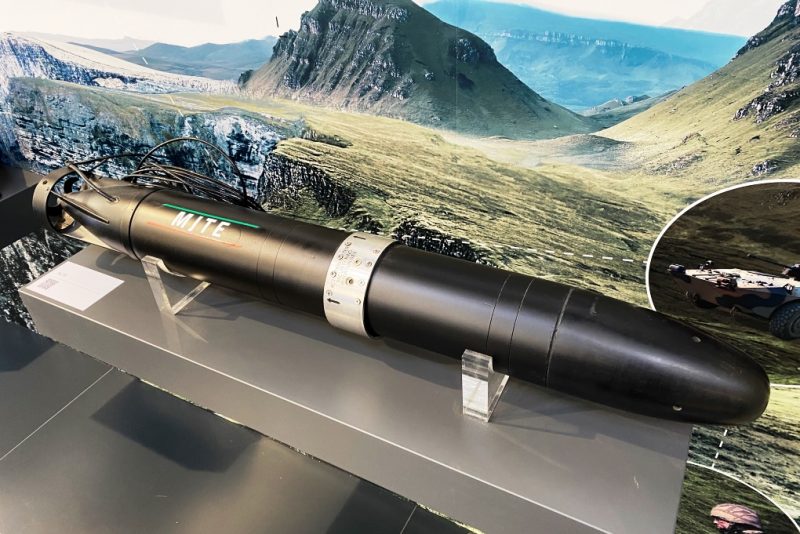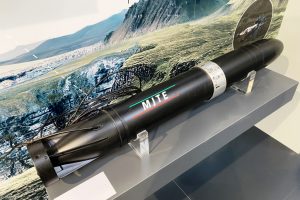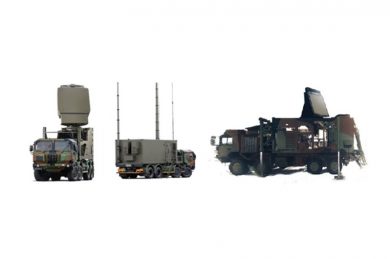SeaFuture 2023 – Leonardo MJTE decoy to be qualified by 1st quarter 2024
The new generation Mobile Jammer Target Emulator (MJTE) decoy, capable to be deployed from surface and underwater platforms, is expected to be qualified by Leonardo in the 1st Quarter 2024.
Leonardo developed the system under a contract awarded by the Italian MoD, together with the production and supply of a first batch of decoys.
Compatible with current Leonardo C310 and C303/S countermeasures launching systems, respectively for surface and underwater vessels, and both sold worldwide, the MJTE can emulate the acoustics characteristics of its host moving or stationary platform and emit a powerful jamming signal to hide the host vessel while this is performing an effective evasive manoeuvre.
The new decoy is capable to counter the attacks of latest generation lightweight and heavyweight wire and not wire-guided torpedoes, Leonardo claims. The MJTE combines in a single body the capabilities of current stationary jammers and mobile target emulators, therefore reducing the number of decoys in a salvo, nearly doubling the number of defensive actions.
The MJTE body is around 1.3 meters long and has a 127 mm diameter, weighs 21 kg, and features a transmitter front section, battery, electronics, and a rear motor section with a towed receiver. It also comes in an exercise configuration, buoying at the end of the mission allowing its recovery.
According to Leonardo, the MJTE is compatible with current and future surface and submarine carried launchers. The new decoy can be launched from both current dedicated trainable 8 or 12 pneumatic-actuated barrels launch subsystems from Leonardo, as well as from the Euroslat consortium 12-barrel anti-torpedo launch system, two such modules being installed on board French and Italian FREMM frigates and Horizon destroyers, as well as on the Charles de Gaulle aircraft carrier.
The MJTE can also be fitted in any type of anti-air warfare decoy launcher by using a pyrotechnical canister, including the new ODLS 20 from Leonardo. The company has already sold internationally its C310 Light countermeasures launching system suitable for MJTE and based on the lightweight B358 single launch tube, which can be grouped together.
The new decoy can also be launched from third parties decoy launchers such as the Lacroix’s Sylena Mk 2, under an integration agreement announced in November 2020.
In the submarine-launched configuration, the new decoy is being promoted as part of the current Leonardo C303/S anti-torpedo countermeasure system, and is fully compatible with the latter suite. It consists of a number of launching systems, mounted externally on the pressure hull of the submarine and below the submarine superstructures, a control computer, fitted with a man machine interface, and connected with the torpedo detection system and with the Combat Management System, which controls the launch of the countermeasures.
Although Leonardo representative do not confirm or comment, EDR On-Line understood the company has already responded to a request for proposal of a major European submarine operator. The Italian Navy also decided to proceed with the procurement and integration of an anti-torpedo countermeasure on its future U212 NFS submarines, no further information being available.
Under the surface platform-mounted system named Survival (and previously known as Morpheus), Leonardo is offering the new decoy with the above mentioned launchers, a reaction management sub-system and the new Black Snake towed array sonar..
The latter will equip the new Italian Navy’s Trieste-class LHD and is suitable to be also installed on PPAs in place of the Leonardo’s ATAS active towed array sonar, while although both Fincantieri and Leonardo haven’t disclosed or commented, the system is also reported to equip the new Al Zubarah-class corvettes and the under construction amphibious ship for the Qatar Emiri Naval Forces.
Photos by L. Peruzzi






